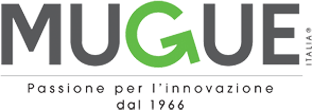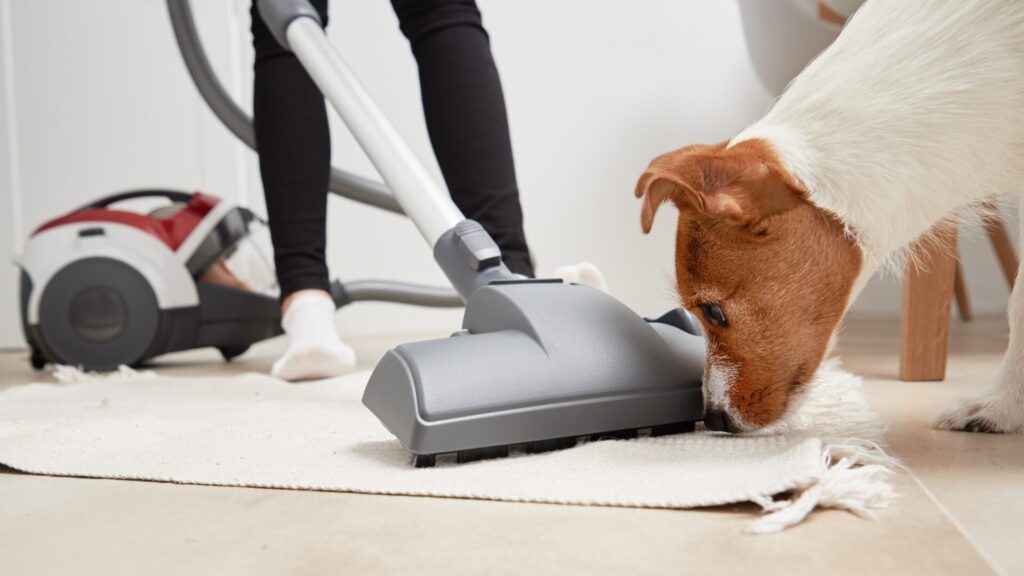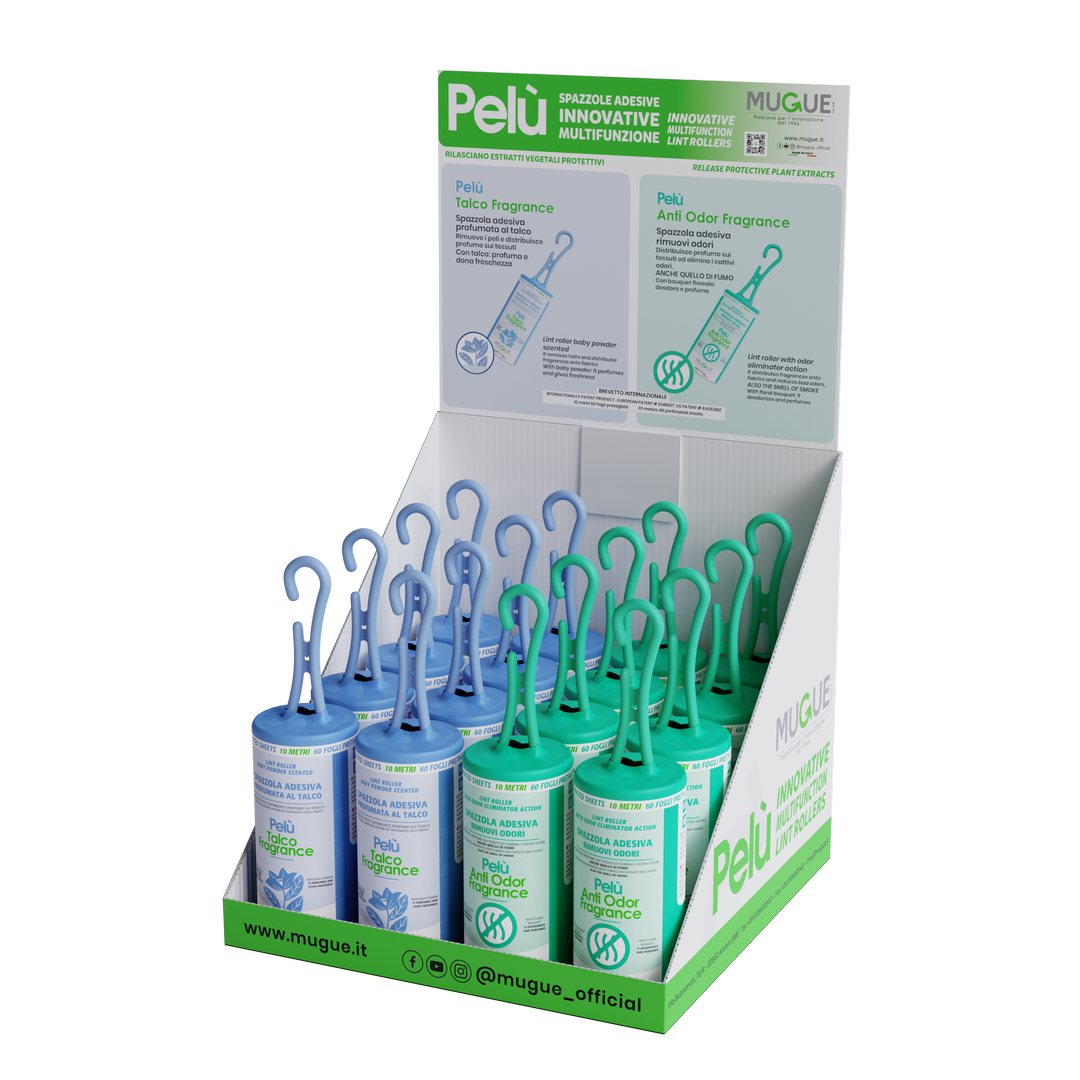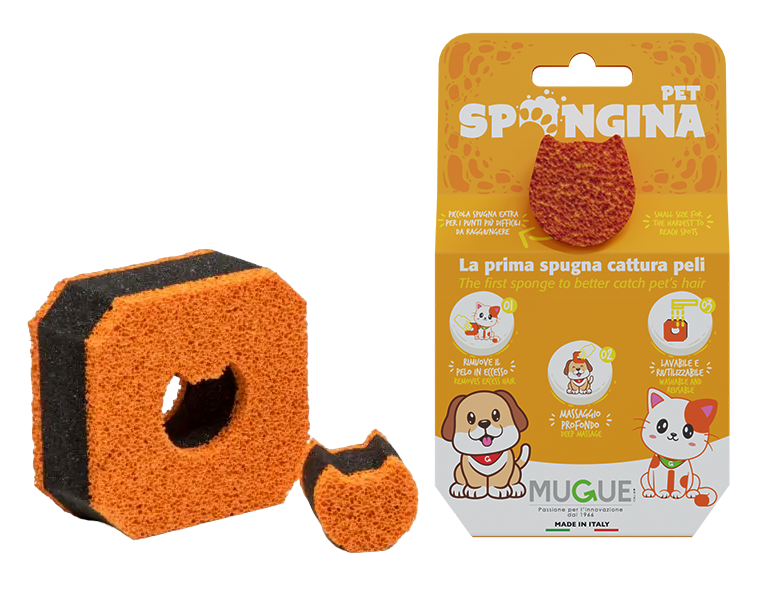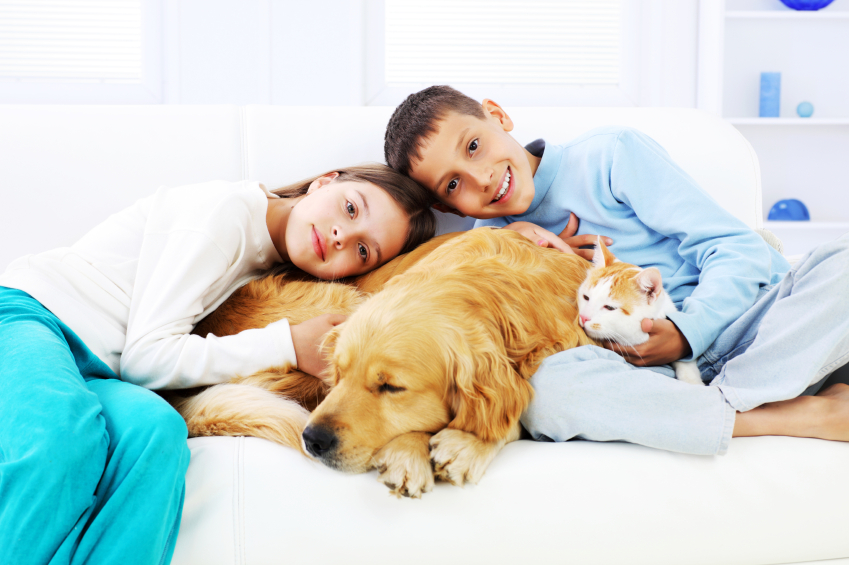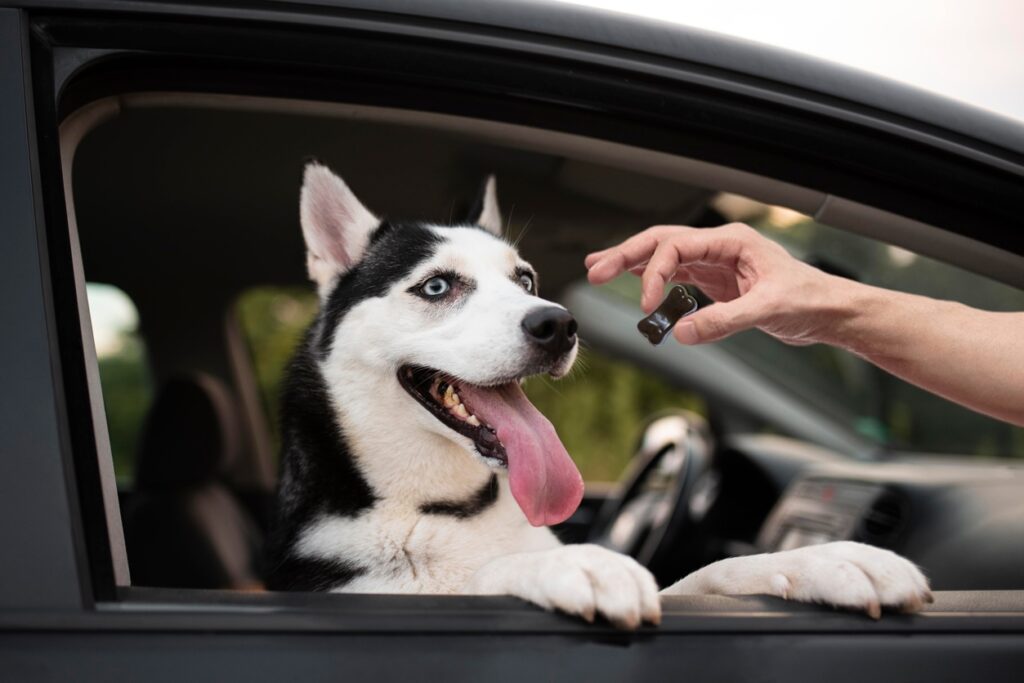You love your dog, but let’s face it: keeping your house clean with a four-legged friend can be a real challenge. Hair everywhere, paw prints on the floor and that typical smell that, as much as you adore your faithful companion, you would rather not smell on the couch. And then there’s the question of hygiene, how to ensure a healthy environment for both you and your pup, without stress and without filling the house with harsh chemicals?
The good news is that with a few precautions and the right cleaning methods, you can have a shiny and safe house, even with a dog that runs happily between rooms. In this article, you will discover practical and effective tricks to eliminate hair, odors and bacteria, keeping your home welcoming and fragrant. Get ready to say goodbye to dirt and enjoy the beauty of living with your furry friend!
How to remove odor from your home and fabrics
Anyone who owns a dog knows it: as adorable as they are, they can leave a lingering odor in your home and on fabrics. But where does this smell come from? Skin oils, paw sweat, saliva, and even the environment in which the dog lives contribute to the formation of that characteristic odor. In addition, if the dog loves to go for walks outside, he can collect dirt, moisture, and bacteria on his fur, amplifying the problem. Beds, sofas, and carpets also absorb these odors, making them difficult to eliminate with just a superficial cleaning.
Tricks to eliminate dog smell in the house
- Air the rooms often: It may seem trivial, but air exchange helps eliminate stagnant odors and keep the house fresher. Opening windows at least twice a day is a simple but effective habit.
- Wash your dog and his accessories regularly: a monthly bath with a specific shampoo helps keep the coat clean and fragrant. The dog’s bed, blankets and toys should also be washed frequently, as they easily absorb odors.
- Using Baking Soda and Vinegar for Fabrics and Floors: baking soda is a great ally for neutralizing odors. Just sprinkle a little on carpets, sofas or rugs, let it act for a few hours and then vacuum it up. White vinegar, on the other hand, can be diluted in water and used to wash floors and surfaces, removing bacteria and unpleasant odors.
- Scent your home with natural remedies: Essential oils such as lavender, lemon or tea tree can be added to a diffuser or mixed with water to create a refreshing spray for fabrics and rooms.
Pelù ANTI ODOR FRAGRANCE
In addition to regular cleaning, a practical and effective solution for keeping clothes and fabrics fresh is the adhesive brush Pelù ANTI ODOR FRAGRANCE. This accessory does not only remove hair, dust and dandruff, but thanks to the scented silicone paper, it distributes a pleasant floral aroma that helps neutralize persistent odors, including that of smoke. It is suitable for all types of fabrics, including suede, and is perfect for those who want a touch of extra freshness on clothes, sofas and blankets.
Remove hair from fabrics, carpets and blankets
No matter how many times you vacuum, hair always comes back, weaving its way into fabrics and making cleaning your home a real challenge. Luckily, there are effective ways to control the problem without going crazy.
The first rule is consistency. Regular vacuuming helps limit hair accumulation, but for a more thorough cleaning it is useful to have a few more tricks. A simple and immediate method consists of using a slightly dampened latex glove: just pass it over the surfaces so that the static electricity attracts the hair, collecting it effortlessly. However, if you want an even more effective and long-lasting solution, SPONGINA HOME is the perfect ally. This innovative sponge captures hair of all kinds, dust and dandruff from sofas, carpets, clothes and even car seats, eliminating even surface dirt without ruining the fabrics. The great thing is that you don’t need water to use it, it can be easily washed under running water and can be reused many times.
But why stop at cleaning the house when you can act directly at the source? Regularly brushing your dog drastically reduces the amount of hair that is dispersed into the environment and, to do this in a practical way, there is PET SPONGE. This sponge can be used directly on the animal’s coat, gently massaging it to remove dead hair before it ends up on furniture and clothing. In addition to keeping the hair tidier and healthier, it is also perfect for collecting those already fallen on fabrics and surfaces, greatly simplifying daily cleaning.
And what about carpets and blankets? They are also among the favorite places of our four-legged friends, so it is essential to clean them regularly. A natural and effective remedy is baking soda: sprinkle a little on the carpets, leave it to act for half an hour and then vacuum it helps to neutralize odors and dirt without too much effort. For blankets, however, a monthly wash with a delicate detergent is ideal, perhaps adding a few drops of lavender essential oil for a fresh and relaxing scent.
Another very useful ally for washing blankets, carpets and clothes full of hair is PET BAG, the special protective bag to use in the washing machine. Made of a technical material that lets water and detergent pass through, it retains hair inside, preventing it from dispersing into the garments or clogging the washing machine filter. It also helps protect fabrics from the stress of the spin cycle and from felting, prolonging their life over time. It is reusable for approximately 20 washes up to 60°C: a real linen saver for those who live with animals.
However, when it is not possible to wash bulky fabrics often, SPONGINA HOME comes in handy once again, allowing you to remove hair and impurities in a few steps and without the need for water.
With these tricks and the help of practical tools, eliminating hair and dirt from fabrics becomes much easier. Keeping your home clean and fragrant, without having to give up the cuddles of your four-legged friend, is possible… and with less effort than you imagine!
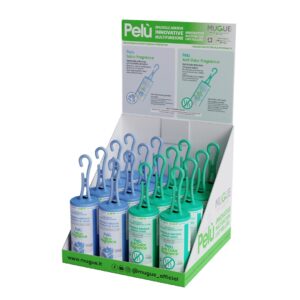
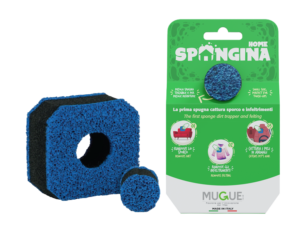
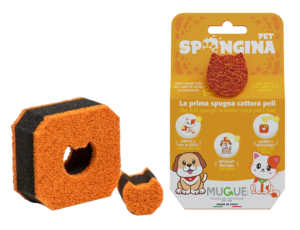

Cleaning and sanitizing floors
Everyone knows how important it is to keep floors clean and sanitized, especially those who live with a four-legged friend, and it is not only for the order of the house, but also for the health of the animal and the whole family. Our furry friends spend a lot of time in contact with the floor, they walk on it, sleep on it and often “taste” it curiously, licking surfaces or picking up fallen objects. This is why it is essential to choose safe cleaning products, avoiding those that are too aggressive or contain toxic substances.
One of the most common mistakes is using detergents based on ammonia or bleach, which can be harmful to dogs. Ammonia, in particular, emits an odor similar to urine and could induce the dog to mark its territory. Bleach, on the other hand, if inhaled or accidentally ingested, can cause irritation to the respiratory tract and digestive problems. It is better to opt for natural and effective solutions, such as baking soda, excellent for neutralizing odors, and white vinegar, which has antibacterial and disinfectant properties, but is not toxic to animals. A good method is to dilute half a glass of vinegar in a bucket of hot water and use it to wash the floors: it sanitizes deeply and helps eliminate dirt residues, without leaving dangerous substances.
To collect hair, however, the vacuum cleaner remains one of the most effective solutions, especially if equipped with specific filters for animals. However, those looking for a faster and more practical method can rely on an electrostatic mop or a slightly damp microfiber cloth, which attract hair without dispersing it into the air. A rubber broom can also be an excellent ally: thanks to the electrostatic charge, it collects hair more effectively than traditional brooms with rigid bristles, which often move it without actually eliminating it.
Another useful trick is to pass a dry and clean sponge over the floors before washing them. This method is particularly effective on smooth surfaces, such as parquet or tiles, because it helps to collect most of the hair without making it fly everywhere. Alternatively, there are specific tools such as the sponges of the SPONGINA line, designed to remove hair and dirt without using water.
Finally, to keep the floors always fresh and fragrant without risks for the dog, you can use ecological detergents based on natural ingredients, or make a DIY spray by mixing water, baking soda and a few drops of lavender or tea tree essential oil, which have antibacterial properties and leave a delicate and pleasant scent.
Clean the dog’s kennel and belongings
Your dog’s kennel is his safe haven, the place where he feels protected and relaxed. However, precisely because he spends so much time there, it tends to accumulate dirt, hair, dust and even bacteria, which can cause bad odors and, in some cases, health problems. The same goes for his toys, bowls and accessories, which often come into contact with saliva, food residues and germs. Regularly cleaning these objects not only ensures a more hygienic environment for your four-legged friend, but also helps prevent allergies, skin infections and the proliferation of parasites such as fleas and mites.
How to Clean Your Dog Kennel Effectively
How often you should wash your dog’s kennel depends on how much your dog uses it. If your dog loves to be outdoors or has long, thick fur, a thorough cleaning at least once a week is recommended. For an indoor kennel, however, you can do it every two weeks, integrating a quick clean with vacuuming and wiping with a damp cloth to remove excess hair.
If the dog house has a removable lining, the most practical method is to wash it in the washing machine with a delicate detergent that does not contain aggressive chemicals. The ideal is to use a natural or hypoallergenic detergent, avoiding the use of fabric softeners, which could irritate the dog’s skin. To eliminate unpleasant odors and have a sanitizing effect, you can add half a glass of white vinegar to the rinse: it neutralizes bad odors without leaving artificial perfumes that are too strong, which could bother the dog.
If the kennel is not removable, cleaning must be done manually with a microfiber cloth soaked in warm water and vinegar, or with a neutral detergent diluted in water. After cleaning, it is essential to let it dry completely in the air to avoid the formation of mold and bad odors. A useful trick to keep the kennel always fresh is to sprinkle a little baking soda on the surface, leave it to act for a few hours and then remove it with the vacuum cleaner: this helps to absorb humidity and odors naturally.
Sanitize toys, bowls and other accessories
Dog toys also need frequent cleaning, especially if they are chewed or taken outside. Rubber or hard plastic toys can be washed with warm water and neutral soap, while fabric or plush toys can go directly into the washing machine, always with a delicate detergent. A natural alternative is to soak them in a solution of water and vinegar for a few hours, then rinse them well and let them dry.
Food and water bowls are among the items that get dirty the most quickly and should be washed every day. The accumulation of food debris and saliva can promote the proliferation of bacteria, so it is best to use warm water and soap or a solution of water and baking soda for a more thorough cleaning.
Finally, leashes, collars and harnesses should also be washed regularly, especially if the dog loves to roll around. Washable fabrics can be soaked in water and Marseille soap, while for leather ones it is better to use a damp cloth with a little white vinegar to remove dirt and bacteria without ruining the material.
Cleaning your dog’s kennel and belongings carefully is not just a matter of hygiene, but a gesture of love for your four-legged friend, who will be able to enjoy a clean, safe and comfortable space every day!
Cleaning your dog’s paws and fur
After a walk outside, your dog’s paws are a real collector of dirt. Dust, mud, smog residues, bacteria and even chemicals such as weed killers or antifreeze can settle on the pads and be carried directly into the house. Cleaning the paws before entering is not only a matter of domestic hygiene, but is also essential for the health of your four-legged friend: by licking himself, in fact, he could ingest harmful substances or develop irritation and cracks due to contact with rough surfaces or those treated with chemical products.
Regular grooming is also important, especially if your dog spends time outside or lives in an urban area. The coat retains smog, dust, and pollen, which can trigger allergies in both the animal and family members. In addition, a well-groomed coat reduces the formation of knots and prevents the accumulation of parasites such as fleas and ticks.
How to clean paws and fur in a practical and safe way
If the thought of washing your dog with soap and water after every walk seems daunting, there is a practical and effective solution: Paw Clean. This water-based spray has been specially formulated to gently sanitize dog and cat paws, without the need to rinse. Thanks to the presence of hydrogen peroxide, it safely removes dirt and bacteria, while ingredients such as glycerin, chamomile and calendula moisturize the skin, soothing any irritation or redness. It is also ideal for puppies and contains no alcohol, so it does not dry out or irritate the pads.

L’applicazione è semplicissima, basta nebulizzare Paw Clean direttamente sui polpastrelli e utilizzare la speciale spugnetta a cuore in dotazione per pulire e asciugare delicatamente le zampe. Grazie al suo design ergonomico e al pratico foro, la spugnetta è facile da impugnare e può essere appesa al collo del flacone per averla sempre a portata di mano. Il tutto senza bisogno di acqua, rendendo la pulizia veloce e adatta all’uso quotidiano.
Per il resto del corpo, una buona abitudine è spazzolare il cane regolarmente, almeno una volta al giorno per i manti lunghi e ogni due o tre giorni per quelli corti. Una passata con un panno umido o con salviette specifiche aiuta a rimuovere impurità e polvere, mantenendo il pelo fresco più a lungo. Se il cane tende a sporcarsi spesso, un bagno ogni 4-6 settimane con uno shampoo delicato sarà sufficiente per mantenere la pelle e il pelo in salute, senza alterare il naturale equilibrio della cute.
Prendersi cura delle zampe e del pelo del proprio cane non è solo una questione di pulizia, ma un vero e proprio atto d’amore. Con piccoli gesti quotidiani e l’uso di prodotti specifici, puoi proteggere il tuo amico a quattro zampe da irritazioni e agenti nocivi, mantenendo al tempo stesso la tua casa più pulita e igienizzata.
